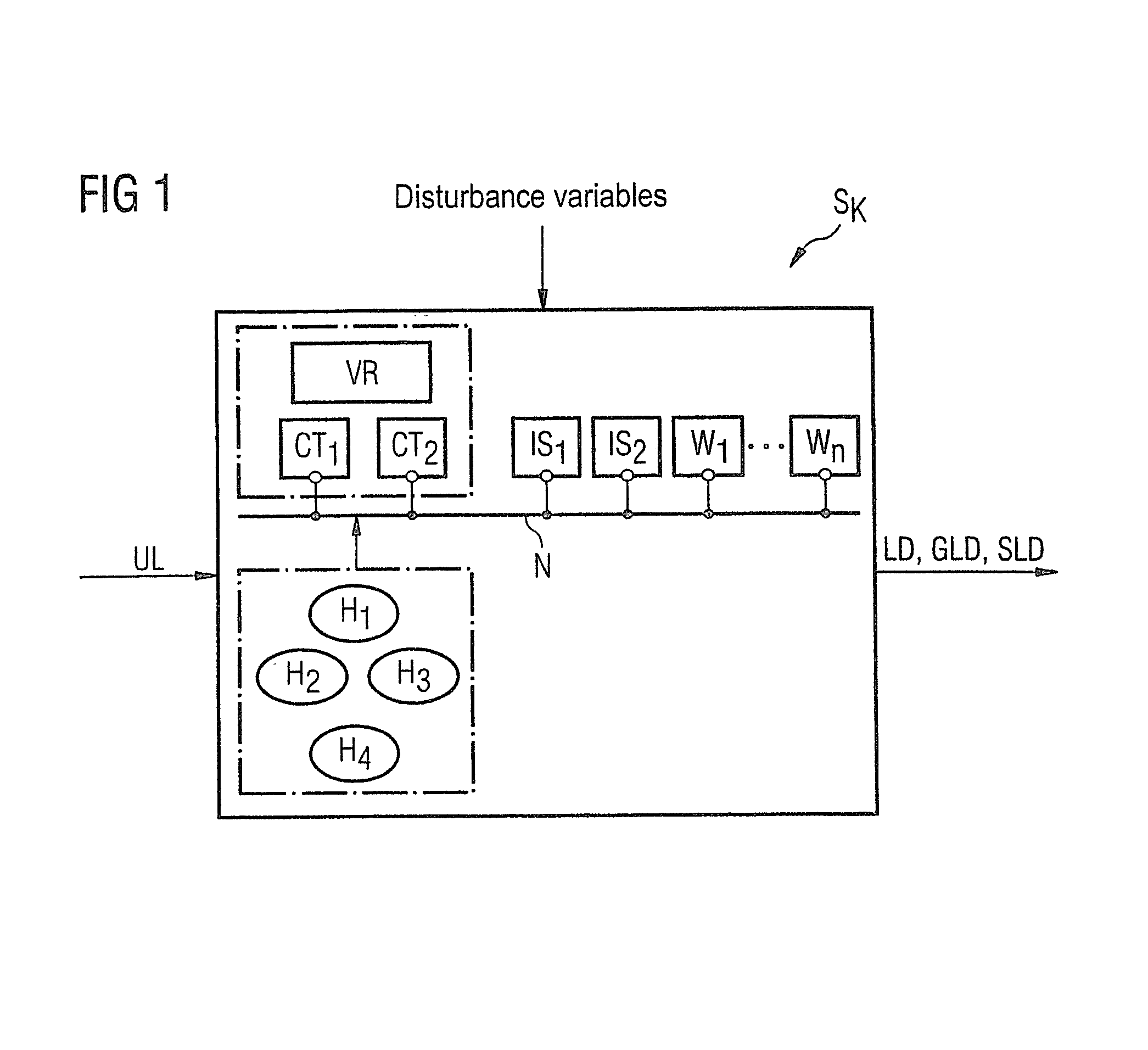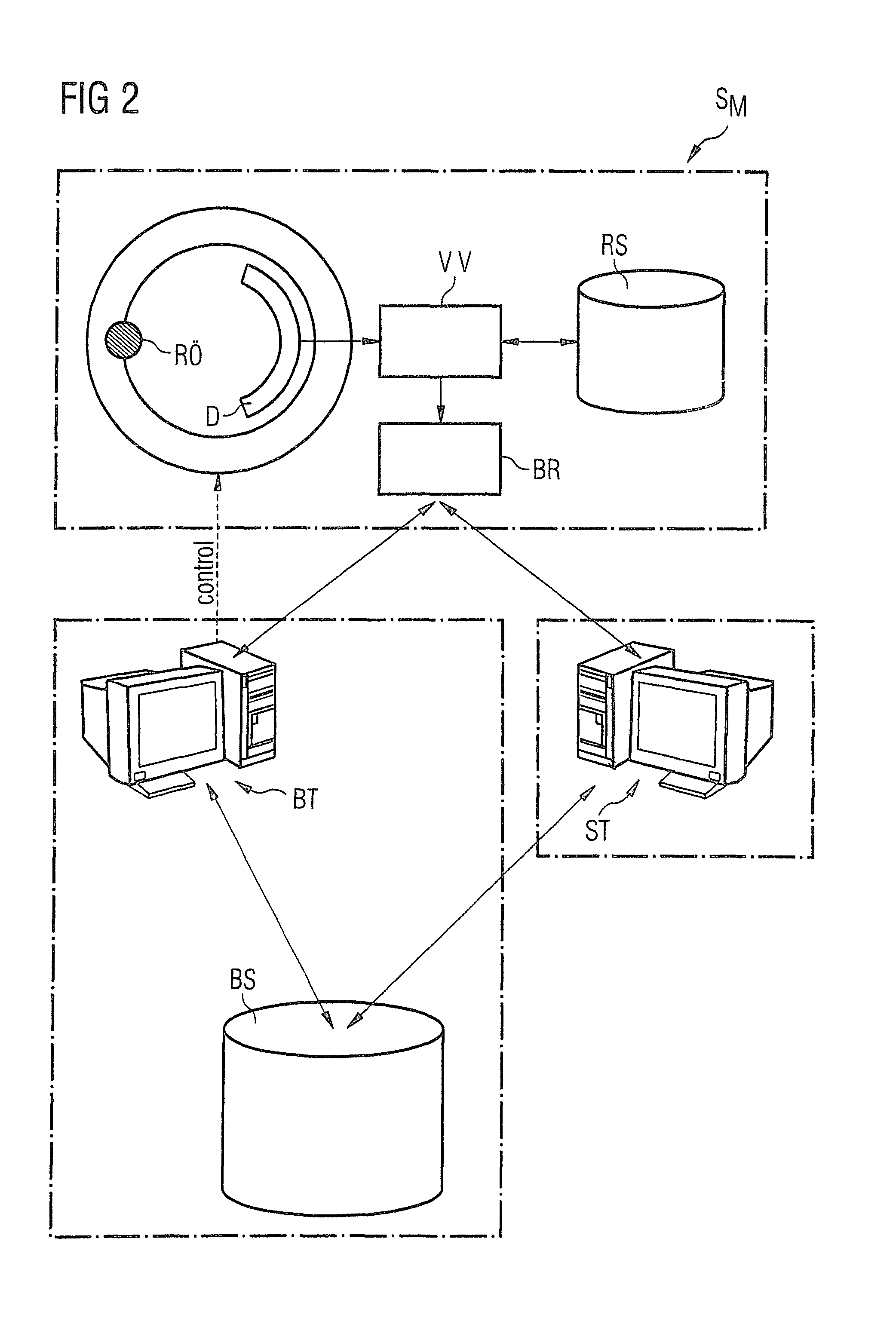Method for testing and controlling workflows in a clinical system and/or components thereof
a clinical system and workflow technology, applied in the direction of instruments, multi-programming arrangements, ultrasonic/sonic/infrasonic diagnostics, etc., can solve the problems of relatively time-consuming and costly tests, complex interaction of all variants, and inability to exact conclusion of how such a medical-technical system behaves in the clinical environment. achieve the effect of simple and cost-effectiv
- Summary
- Abstract
- Description
- Claims
- Application Information
AI Technical Summary
Benefits of technology
Problems solved by technology
Method used
Image
Examples
Embodiment Construction
[0049]Both clinical and / or medical-technical systems are capable of being tested with the aid of the inventive test method, by examination workflows being simulated within the appertaining systems.
[0050]FIG. 1 gives an overview of a clinical system SK. As can be seen in
[0051]FIG. 1, a clinical system SK has one or more modalities CT1, CT2. The shown example is a clinical system SK with two modalities CT1, CT2, namely two computed tomography apparatuses CT1, CT2. As medical-technical systems, these computed tomography apparatus CT1, CT2 can likewise be considered in greater detail and inventively tested by simulations. This can subsequently described using FIG. 2.
[0052]In the test of a clinical system SK, however, the focus also includes the analysis of the other participating system components, i.e. not only on the medical-technical systems, which here are initially considered as “black box” system components. In addition to the modalities CT1, CT2, the clinical system SK normally f...
PUM
 Login to View More
Login to View More Abstract
Description
Claims
Application Information
 Login to View More
Login to View More - R&D
- Intellectual Property
- Life Sciences
- Materials
- Tech Scout
- Unparalleled Data Quality
- Higher Quality Content
- 60% Fewer Hallucinations
Browse by: Latest US Patents, China's latest patents, Technical Efficacy Thesaurus, Application Domain, Technology Topic, Popular Technical Reports.
© 2025 PatSnap. All rights reserved.Legal|Privacy policy|Modern Slavery Act Transparency Statement|Sitemap|About US| Contact US: help@patsnap.com



